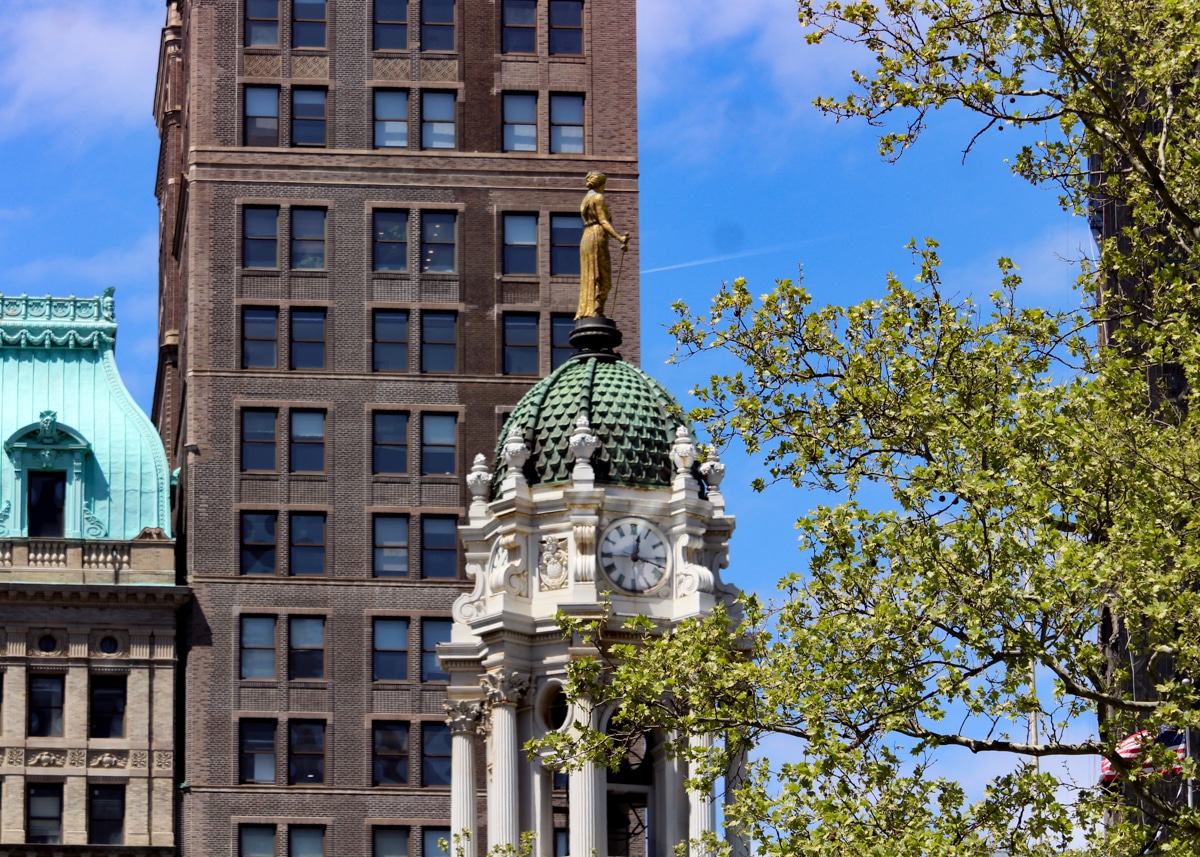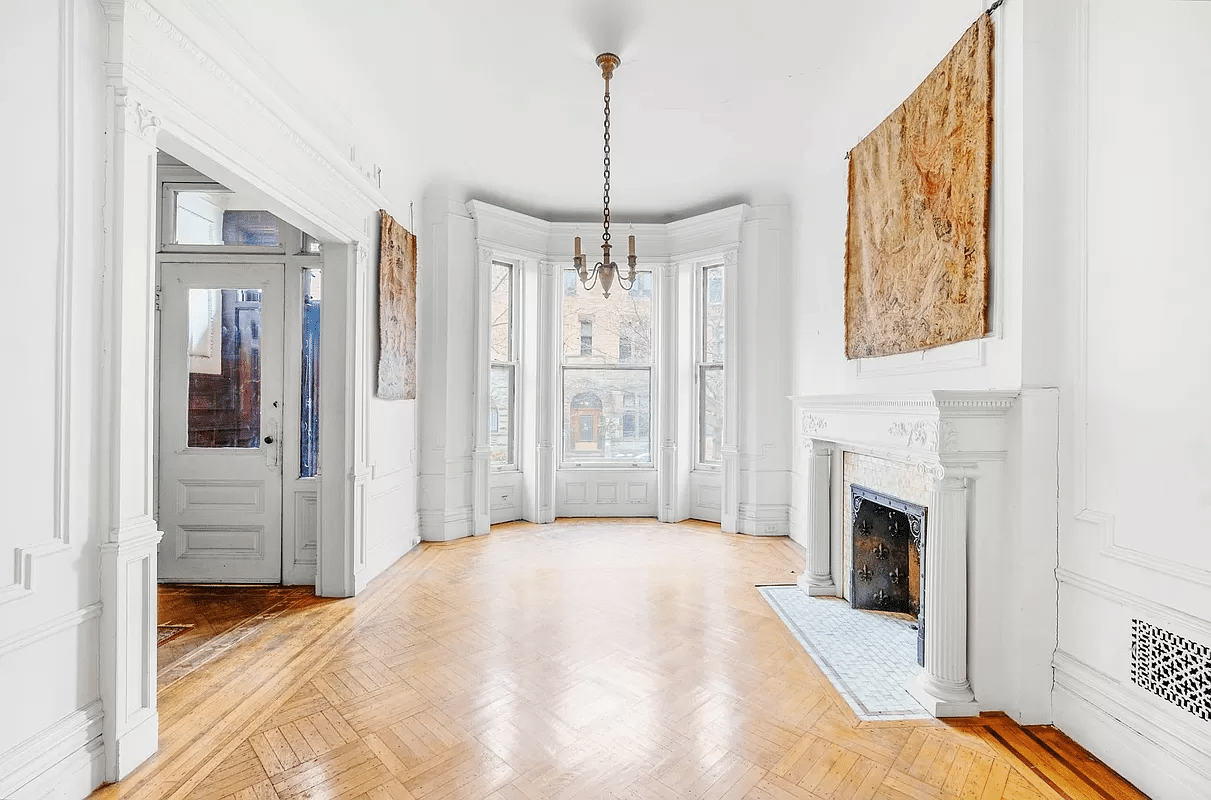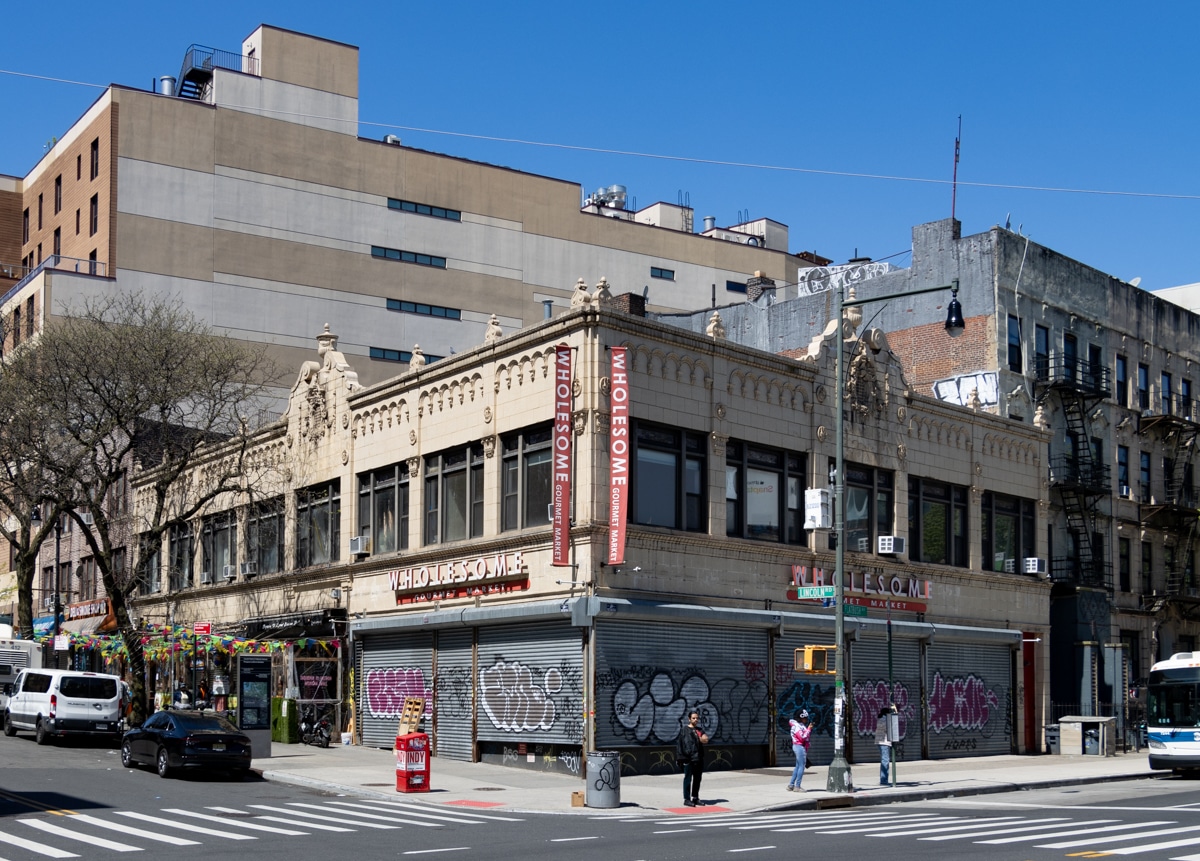Building of the Day: 107 Prospect Park West
Brooklyn, one building at a time. Name: Row House, now condos Address: 107 Prospect Park West Cross Streets: Corner 6th Street Neighborhood: Park Slope Year Built: 1899 Architectural Style: Renaissance Revival Architect: Axel S. Hedman Other Work by Architect: Many, many row houses, flats buildings, apartment buildings in most brownstone neighborhoods, as well as churches,…

Brooklyn, one building at a time.
Name: Row House, now condos
Address: 107 Prospect Park West
Cross Streets: Corner 6th Street
Neighborhood: Park Slope
Year Built: 1899
Architectural Style: Renaissance Revival
Architect: Axel S. Hedman
Other Work by Architect: Many, many row houses, flats buildings, apartment buildings in most brownstone neighborhoods, as well as churches, bath houses and other civic building. Also, the rest of this row – 103-107 Prospect Park West.
Landmarked: Yes, part of Park Slope Historic District (1973)
The story: This building has been in the news for the last couple of years because it has gone from abandoned white elephant mansion to highly desirable condos in the space of two years, setting records for amazingly quick sales, as well as for the quality of the renovations. But who was the first resident of 107 Prospect Park West? What was life for that family like in this large expansive mansion? I don’t have all of the answers, but I have some.
The house was one of a group of five, designed by prolific architect Axel S. Hedman who specialized in these sorts of elegant Renaissance Revival townhouses. The Swedish-born Hedman designed literally hundreds of limestone row houses, ranging in price and features from middle class simplicity to elegant, top of the line mansions such as these. This group of speculative houses was commissioned by Charles G. Peterson, who lived nearby, on 7th Street. This house, 107, is the corner house of the group and is larger and more ornate than the interior houses.
In 1900, right after the houses were finished, Peterson traded this house for 361 Washington Avenue, a very large brick mansion in Clinton Hill.
The trade was with George William Rasch, the first owner and resident of 107 Prospect Park West. Rasch was another of Brooklyn’s successful German-born merchant princes. In 1885, he came to Brooklyn as a young man from the city of Bremen, Germany, where he had worked in the wholesale food business. His first job was as a representative for the Elgin Butter Company, whose headquarters was in Elgin, Illinois. From there, in a number of years, he was successful enough to open his own wholesale grocery firm as a partner in Berry, Lohman and Rasch which did business in Manhattan. He became an American citizen in 1890.
In 1900, the same year he acquired the house, he also bought his partners out and consolidated with the William A. Leggett Company, a very large and successful Manhattan-based wholesale grocery and mercantile company. He stayed with Leggett until he retired in 1908 to pursue other interests. In the course of his career Rasch was a Trustee at both the Germania Savings Bank and the Nassau Trust. He was a board member of several charities and was a trustee and board member of the Evangelical Lutheran Association of Brooklyn.
He was a Board Member of the Manhattan Bridge Passenger Three Cent Railway Line and was active in many of Brooklyn’s elite social clubs, including the Riding and Driving Club of Brooklyn, the Crescent Athletic Club, The Montauk Club, the Golf Club of Bridgehampton, and the Southampton Yacht Club.
In 1894, he married Lena Maria Offermann, the daughter of another Brooklyn mercantile prince, Henry Offermann, for whom the Offermann building downtown on Fulton Street was built. They had two children, a boy and a girl. The Rasch’s lived in the house between 1900 and 1915, perhaps until the mid-1920s, when the house was sold. The Brooklyn Eagle and other local Brooklyn papers have dozens of ads during that time period, as Mrs. Rasch looked for a number of people to fill servant’s positions in the house: maids, cleaning staff, cooks, governesses and child care personnel. She seemed to go through them rather quickly, always requesting Swedish and other Scandinavian help. During this time Mr. Rasch also placed an ad looking for a new brace of horses for his carriage.
By 1927, the house, with brand new owners, seems to have had a drug store or pharmacy in it, perhaps on the ground floor. There are two separate stories, one in 1927 and another in 1928, involving robberies at the drug store. The stores had two separate owners, too. This house obviously has much more to tell us before it was abandoned in the 1980s, and then resurrected. GMAP
Thanks to Brownstoner reader Mike P., for inquiring about the house’s history, and for sending me photographs. I know this isn’t a complete history, but it’s a start. If I find out any more goodies, I’ll certainly revisit it. Suggestions for BOTD are always welcome. Please write me at montrosemorris at yahoo dot com.
(All architectural photographs by Mike Priven)















What's Your Take? Leave a Comment